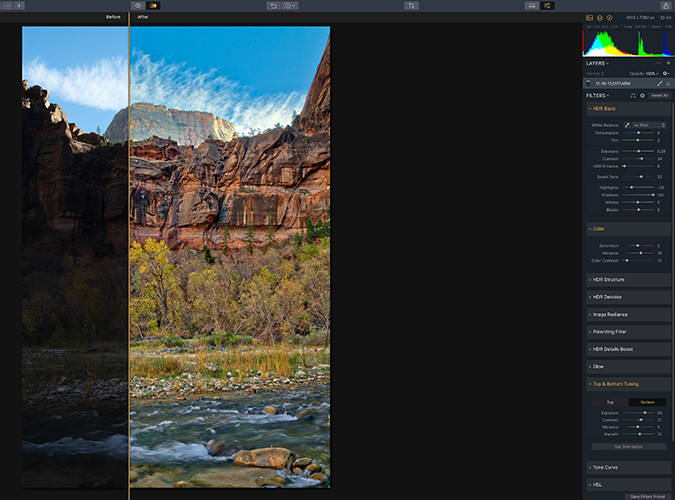

- Aurora hdr 2019 non destruck editing install#
- Aurora hdr 2019 non destruck editing update#
- Aurora hdr 2019 non destruck editing pro#
- Aurora hdr 2019 non destruck editing software#
- Aurora hdr 2019 non destruck editing license#
On1 Photo RAW and Luminar have evolved quite a bit in the past few years, going from a very limited feature-set to a full-blown solution that competes head-to-head with Lightroom and Capture One. I personally use Fuji X-series cameras a lot, and find it unacceptable that DxO is continuing to refuse to add support for Fuji X-Trans. The biggest issue with DxO PhotoLab for me personally, and the reason why I stopped using it, is the lack of Fuji X-Trans RAW support. Best of all, it is very easy to use, and its default rendering of RAW images is excellent. Since purchasing Nik Software, DxO added the U Point technology into PhotoLab, which works amazingly well for quick and easy adjustments.

However, considering how well its lens corrections tools work, it is certainly worth having a look at. I used to rely on ACDSee for viewing images before, but it has gotten slower over time, and ever since I started using FastRawViewer for image culling, I see no need for it anymore.ĭxO PhotoLab feels a bit out of place here, since it is designed to be more of a plugin for Lightroom and not its direct competitor.
Aurora hdr 2019 non destruck editing license#
However, ACDsee is quite buggy, has very annoying notifications that cannot be easily turned off, and its license limit of 1 is very limiting for those who own more than one machine. In addition, it has no capabilities to merge HDRs and Panoramas, which is the strength of Lightroom when compared to everything else out there.ĪCDSee Photo Studio Ultimate is great for those who are starting out, and its extensive list of features is impressive.
Aurora hdr 2019 non destruck editing pro#
While some of the features that Capture One Pro offers are light years ahead of Lightroom (advanced color adjustments, layers, masking, tethering, etc), its file management features / DAM are rather weak, and it is not an easy tool to get used to. Personally, I primarily use Lightroom Classic CC for my editing needs, but every once in a while, I fire up Capture One Pro to do some editing.
Aurora hdr 2019 non destruck editing software#
If just a few years back Lightroom and Capture One were in the lead, other software such as On1 Photo RAW and Lumunar caught up with a lot of the features, including Digital Asset Management (DAM) for the proper file management. So if you disagree, please let us know in the comments section below!īased on the above chart, it is pretty clear that most modern image editing tools tightly compete with each other. Some of this data such as Stability and Learning Curve is rather subjective – it is based on my experience running the software, which might differ from other people’s experiences.
Aurora hdr 2019 non destruck editing update#
Instead, we decided to focus on the key / most important features and include additional data for consideration, such as Stability, Performance, Learning Curve and Update Frequency. Please note that we did not list every possible feature and slider offered by each individual software package, as it would make the above chart unreadable. It was a pretty exhausting task to say the least! Below is the software comparison table: FeatureġSubjective opinion based on personal experience of the authorĢHDR Merge Tool in ACDSee Photo Studio Ultimate 2020 is extremely poor / unusableģAurora HDR Tool must be purchased separatelyīasic RAW File Editing (Crop, Exposure, WB, etc)ĭistortion, CA and Vignetting Corrections
Aurora hdr 2019 non destruck editing install#
To come up with all the data below, we had to install every software package on a single machine and run them all for some time, going through and testing out the features. If you disagree with our choices and would like to see other non-destructive software included, please let us know in the comments section below (note that destructive software editing tools such as Adobe Photoshop, Elements, Affinity Photo, PaintShop Pro and GIMP should not be in this list).

We recognize that there are many more out there, but we cannot include them all, since such research would take a lot more time and the chart would get massive, making it hard to read. We picked the following six software packages that offer non-destructive editing based on their popularity among photographers:


 0 kommentar(er)
0 kommentar(er)
